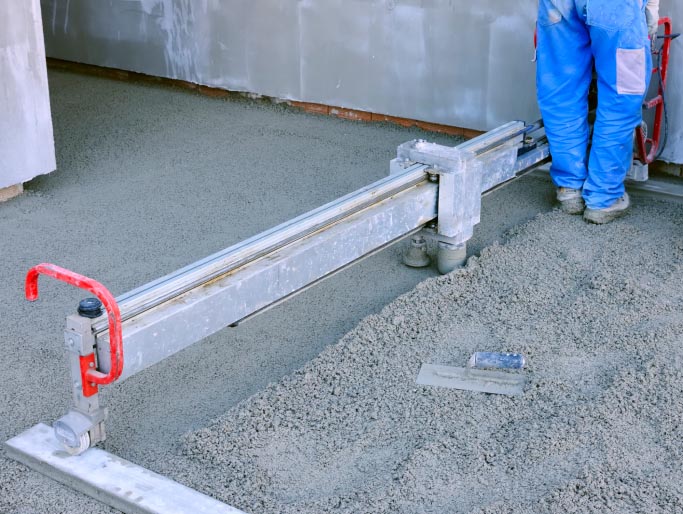What is Floor Screed Used For?
If you're undertaking a renovation or construction project, you're likely to use floor screed at some point. This won't be news to you if you're involved in the building trade. For the uninitiated, however, it may require a little explanation. What follows is a layman's guide to cement screed. We explain what it is, how it's used and what it's for.
Here at R & B Plastering we pride ourselves on being experts in the covering of interior and exterior surfaces. From drylining to underfloor heating concrete, our experience is hard to beat. Read on to discover more about what floor screeding is and why it's important.
What is floor screed?
Floor screeding contractors are essential to most commercial construction projects. In many cases, without them the job could not proceed. The name "screed" describes a material that is similar to cement, and has similar properties. Typically it's made up of cement and sharp sand, but that will depend on what it's being used for. Underfloor heating concrete may require different properties, for example. If needed, it can also be mixed with latex products, binding materials and water. Metal mesh or fibres are used in reinforced screed to stop it cracking or shrinking as it dries. Liquid or free-flowing screeds are sometimes used in commercial settings where time is limited. This type of screed can be installed more quickly and easily.
How is floor screed applied?
Because of its similar properties, concrete floor screed is generally applied in the same way as a cement render. The key differences are that it's used on floors and not walls, and is usually a much thinner covering. Usually, the screed is poured onto the surface and spread out with a plastering trowel. A screed board or straight-edged tool is then used to create a smooth and even surface.
Creating a level surface
The most common use for floor screed is in areas where the existing floor is uneven or not level. In the majority of commercial and large domestic situations, this is an important consideration. The final floor covering might be anything, from carpet or vinyl to wood laminate. Whatever it is, a level and even surface is essential to achieve a professional finish. In areas such as retail premises and schools, footfall will be high on a daily basis. Any uneven areas will quickly become worn, and this can be costly to repair. Concrete floor screed is particularly important under patterned floors, or beneath tiles or stone flags.
Underfloor heating
Often concrete floor screed is used where an underfloor heating system is to be installed. Screed is used to embed the pipes under the floor. This helps to distribute the heat more evenly throughout the premises. This will increase the performance of the heating system and will help lower energy costs. In large domestic premises, schools and housing projects, this can be a key factor.
If you're looking for professional contractors to work on your next project, please get in touch.


